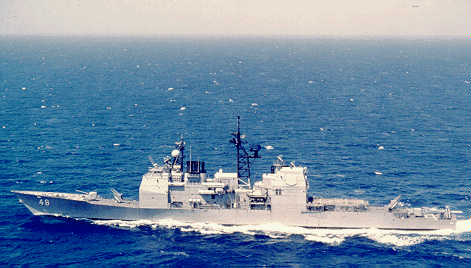
The USS Yorktown is a guided missile cruiser, and the first in the
Navy to be outfitted with so-called SmartShip technology, which would allow
reducing crew levels by computerizing many ship functions. (This is reminiscent
of the Starship Enterprise's ill-fated encounter with Dr. Daystrom and
the M-5 Multitronic computer system in "The Ultimate Computer" episode
of the original Star Trek series.) In September of 1997, the Yorktown suffered
a complete propulsion system failure and was dead in water for about two
hours and 45 minutes. The subsequent investigation determined that "the
Yorktown lost control of its propulsion system because its computers were
unable to divide by the number zero." Apparently a crew member entered
a zero into a field of some application program, leading to a complete
crash of the system and leaving the ship dead in the water.
Now if I write a computer program, run it on the Unix workstation in
my office, and it mistakenly divides by zero, about the worst that will
happen is that the program will stop and I will see some message on my
monitor saying "overflow error." It will not lead to a complete shut down
of every computer on the Notre Dame campus network—which is the analog
of what happened on the Yorktown. There is still some controversy about
why this seemingly simple error could have such severe consequences, but
a popular theory attributes it to the use of the Windows NT operating system.
A report from the Atlantic Technical Fleet Support Center concluded that
"Using Windows NT ... on a warship is similar to hoping that luck will
be in our favor."


